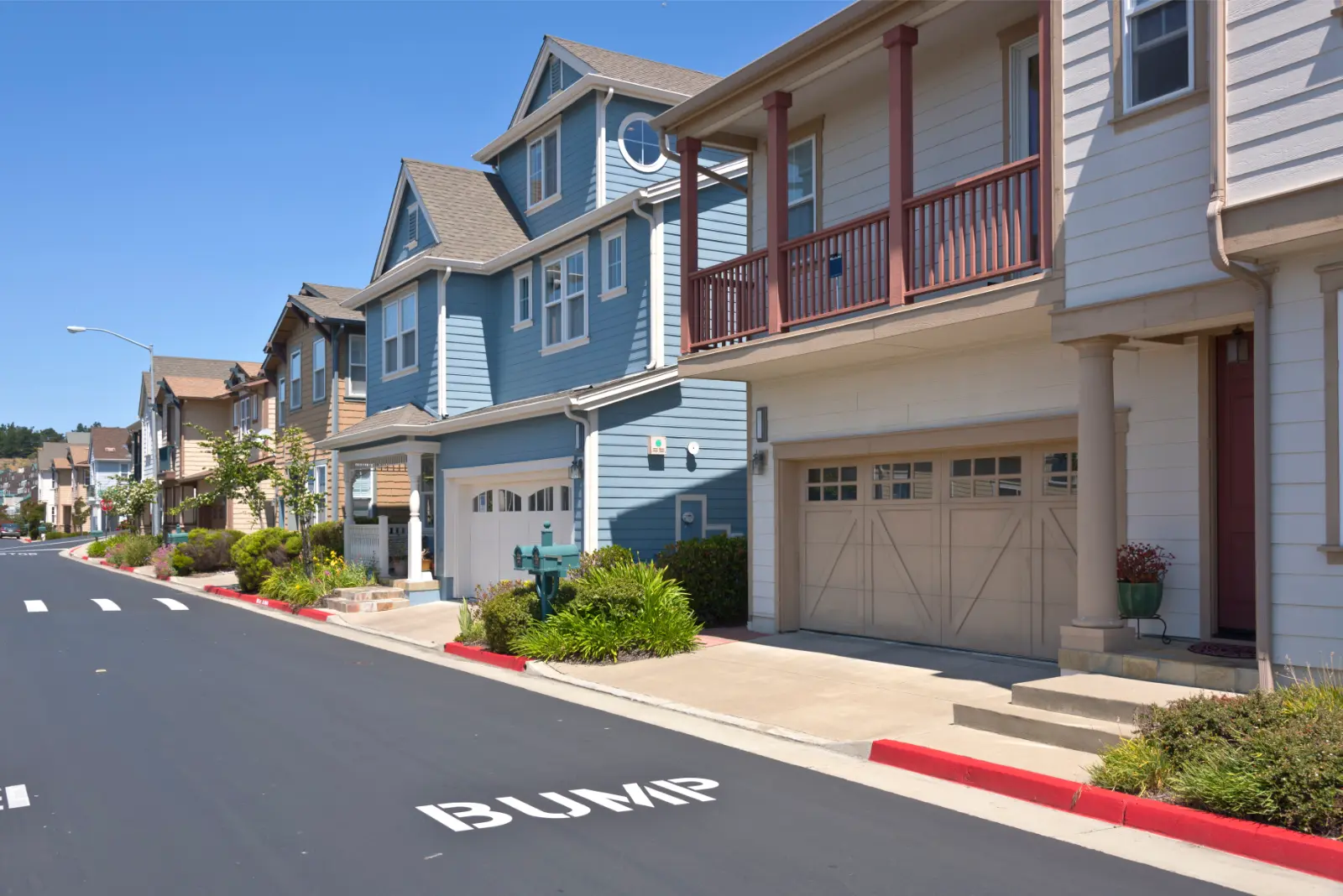
Contents
Are you tired of dealing with a troublesome garage door opener? Are you frustrated by the frequent malfunctions that disrupt your daily routine? Fear not, for a solution is within your grasp.
This how-to guide will equip you with the knowledge and steps needed to fix your garage door opener instantly. No more waiting for expensive repair services or enduring the inconvenience of a malfunctioning opener.
With a few simple techniques and a little bit of time, you’ll be back to smoothly operating garage doors in no time. So, how exactly can you regain control of your garage door opener? Stay tuned to find out.
Key Takeaways
- Common garage door opener issues include malfunctioning remote controls, misaligned safety sensors, loud and grinding noises, unresponsive openers, and doors not closing or opening correctly.
- Troubleshooting steps for garage door opener problems include checking the power source, inspecting and replacing remote control batteries, reprogramming the remote control, adjusting the close limit switch, and lubricating moving parts.
- DIY garage door opener repairs can involve inspecting and tightening hardware, lubricating moving parts, resetting the opener, prioritizing safety, and consulting a professional for complex issues.
- Quick fixes for garage door opener malfunctions include checking the power source, replacing weak or dead batteries, aligning and cleaning safety sensors, clearing debris and lubricating tracks, and ensuring a steady power supply.
Common Garage Door Opener Issues
If you’re experiencing issues with your garage door opener, there are a few common problems that you might be encountering.
Don’t worry, you’re not alone in this! Many people face similar challenges with their garage door openers.
One of the most common issues is a malfunctioning remote control. Sometimes, the batteries in your remote control may be dead, so try replacing them first. If that doesn’t solve the problem, check if there are any obstructions blocking the signal between the remote control and the opener.
Another common problem is a misaligned safety sensor. These sensors are responsible for detecting any objects or people in the path of the garage door. If they aren’t properly aligned, the door may not close or open correctly. To fix this, make sure the sensors are facing each other and clean any dirt or debris that may be blocking them.
Additionally, if your garage door opener is making loud, grinding noises, it may be due to worn-out gears or lack of lubrication. In this case, you may need to replace the gears or apply lubricant to the moving parts.
Lastly, if your garage door opener isn’t responding at all, check the power source. Ensure that it’s properly plugged in or that the circuit breaker hasn’t tripped.
Troubleshooting Steps for Garage Door Opener Problems
To troubleshoot common issues with your garage door opener, follow these steps.
First, check the power source. Make sure the opener is plugged in, and the outlet is working. If it’s connected to a GFCI outlet, press the reset button.
Next, inspect the remote control batteries. Replace them if necessary and ensure the contacts are clean. Ensure the antenna on both the opener and the remote is fully extended and not damaged.
If the opener isn’t responding to the remote control, try reprogramming it. Consult your owner’s manual for instructions on how to do this. If the opener still doesn’t respond, it may be a signal interference issue. Check for any nearby electronic devices that could be causing interference and move them away from the opener.
If the door doesn’t close completely or reverses immediately after touching the floor, adjust the close limit switch. This switch determines how far the door travels before it stops closing. Turn the screw on the switch clockwise to decrease the travel distance.
If the door makes grinding or scraping noises, lubricate the moving parts. Apply a silicone-based lubricant to the rollers, hinges, and tracks. Avoid using WD-40 or oil-based lubricants, as they can attract dirt and debris.
If none of these troubleshooting steps solve the problem, it may be a more complex issue, and you should contact a professional garage door technician. Remember to always prioritize safety when working with your garage door opener.
DIY Garage Door Opener Repairs
Now, let’s dive into how you can tackle DIY garage door opener repairs to address any issues you may be experiencing. By taking matters into your own hands, you can save time and money while feeling a sense of accomplishment.
Here are some simple steps to get you started:
- Inspect the hardware: Check for any loose screws, bolts, or nuts that may be causing the problem. Tightening them up can often resolve issues with the garage door opener.
- Lubricate moving parts: Over time, the moving parts of your garage door opener can become dry and start to squeak or stick. Applying lubricant to the rollers, hinges, and tracks can help them move smoothly and quietly.
- Reset the opener: Sometimes, a simple reset can fix the problem. Locate the reset button on your garage door opener and hold it down for about 30 seconds. This will reset the device and clear any temporary glitches.
Remember, safety should always be your top priority when working on any DIY project. Before starting any repairs, make sure to unplug the garage door opener or disconnect the power source.
Additionally, if you encounter any complex issues or are unsure about how to proceed, it’s always best to consult a professional.
Quick Fixes for Garage Door Opener Malfunctions
Are you experiencing issues with your garage door opener? Don’t worry; we’ve got you covered with some quick fixes to get your garage door back in working order.
These simple solutions will save you time and money, allowing you to regain a sense of belonging and security with your garage door opener.
First, check the power source. Make sure the opener is plugged in and that there are no tripped circuit breakers or blown fuses. Sometimes, a simple power outage or electrical issue can cause the opener to malfunction. By ensuring a steady power supply, you can quickly resolve the problem.
Next, examine the batteries in your remote control. Sometimes, a weak or dead battery can prevent the signal from reaching the opener. Replace the batteries and see if that solves the problem. It’s a small and inexpensive fix that can make a big difference.
If the door isn’t opening or closing properly, check the safety sensors. Align these sensors properly near the bottom of the door tracks. If they’re misaligned or obstructed, they may prevent the door from operating correctly. Adjust or clean the sensors to ensure they’re functioning properly.
Lastly, inspect the garage door tracks for any debris or obstructions. Over time, dirt, leaves, or small objects can accumulate and interfere with the smooth operation of the door. Clear any debris and lubricate the tracks to ensure the door moves freely.
Emergency Garage Door Opener Repair Tips
If you find yourself in an emergency situation with your garage door opener, there are a few important tips to keep in mind for a quick and effective repair. Here’s what you need to know:
- Check the power source: Ensure that your garage door opener is properly plugged in and receiving power. Sometimes, a loose connection or a tripped circuit breaker can cause the opener to stop working. By checking the power source, you can quickly identify and fix the issue.
- Inspect the remote control: If your garage door opener isn’t responding to the remote control, the problem may lie in the batteries. Start by replacing the batteries and testing the remote control again. If it still doesn’t work, try reprogramming the remote control to the opener. Refer to your owner’s manual for instructions on how to do this.
- Reset the opener: In certain emergency situations, resetting the garage door opener can solve the problem. Locate the reset button on the opener, which is usually a small red or yellow button. Press and hold the button for a few seconds until the lights on the opener flash. This will reset the opener and may resolve any issues it was experiencing.
Wrap-Up
Don’t let a malfunctioning garage door opener be a thorn in your side. With these troubleshooting steps and DIY repairs, you can quickly get your garage door opener back in action.
Remember, a stitch in time saves nine, so don’t hesitate to address any issues before they become bigger problems.
Now, you can confidently face any garage door opener emergency that comes your way.
Happy fixing!
Recent Posts
Top 5 DIY Garage Door Maintenance Tips
Your garage door is like the gatekeeper to your home, and keeping it in top
Reliable Signs Your Overhead Door Requires Attention
Many homeowners overlook the subtle signs that indicate their overhead door needs attention. Unusual noises
3 Key Tips for Garage Door Care
Picture your garage door gliding smoothly, a seamless entry into your home. To achieve this,

